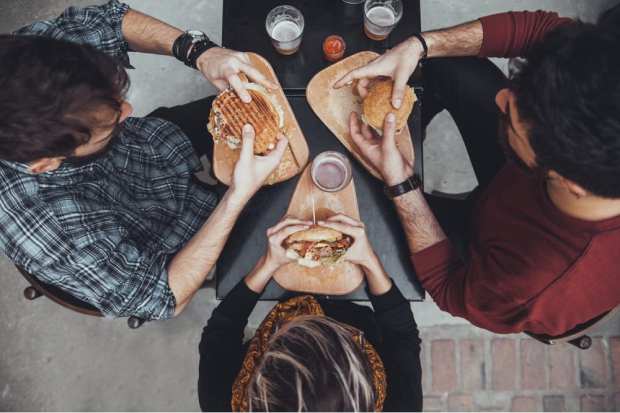Brightloom’s Adam Brotman On Building A Better (Digital) QSR

Restaurant operators are waking up to the fact that they need to bring more digital and mobile oomph to their operations, lest they lose customers or fail to gain new ones in one of the most fiercely competitive fields of retail out there.
But desiring innovation is one thing; making it work in such a way that a restaurant retains ownership of the customer experience is a much different proposition.
If anyone should know that, it’s Brightloom CEO Adam Brotman.
After all, he was chief digital officer at Starbucks and is credited with turning that chain into a digital and mobile powerhouse — one whose lessons are quickly being absorbed and copied in the wider QSR and fast casual restaurant world.
Karen Webster recently caught up with Brotman, and over the course of a lively discussion, the two of them talked about his company’s new software licensing deal with Starbucks and what it means for the restaurant industry at large.
Brotman offered a digital commerce veteran’s inside view about what it will take, going into the 2020s, for QSR and fast casual operations racing to bring more mobile and digital power to their offerings to create better experiences and more efficiencies for their customers. The discussion stands almost as a full-circle exercise: After Starbucks, Brotman decamped to J. Crew to help that longstanding retail chain improve its own digital/loyalty game. Now, in a way, this giant of the industry is back where he started.
Overall Push
Brotman’s current work — to simplify a big part of it — is helping restaurants become tighter with their customers via the smarter deployment of digital platform technology.
“When you have a very strong, direct relationship with the customer, you really control your own destiny,” Brotman said.
Another part of what’s really interesting about his current efforts is what he’s focused on, at least when compared to his work at J. Crew: While retail is mainly about the transaction, restaurants are all about the experience, and that holds true as more and more digital innovation hits the QSR and fast casual areas of the industry.
Brightloom, formerly eatsa, has rebranded itself as an integrated digital platform for restaurants. The company is offering a complete end-to-end, cloud-based software-as-a-service platform, allowing any restaurant to provide its own mobile engagement, loyalty and omnichannel digital ordering offerings to its guests. He told Webster that his experience at eatsa taught him significant lessons about the back-of-house operations of restaurants — lessons that are playing a role in Brightloom’s new digital offerings.
Here’s what recently happened with Starbucks, in case you missed it: The chain has granted Brightloom a software license to select components of Starbucks’ proprietary digital flywheel software; Brightloom will combine its existing technology assets with software licensed from Starbucks’ industry-leading digital flywheel — a concept that, in his telling, includes personalization, ordering, payments and loyalty. As part of the deal, Starbucks will take an equity stake in Brightloom — as well as a seat on the company’s board of directors.
Starbucks digital technology — among the most successful in the industry — appeals to other QSR and fast casual operations because it’s not clunky. The technology has a seamless, comprehensive function and feel, Brotman told Webster. And with the rise of cloud computing and ever more robust mobile technology, it is becoming more pragmatic for those other operators to use software that has a holistic bent instead of being cobbled together from different parts. Even so, it can be hard to resist the decision to outsource such work to, say, third-party delivery providers — but that comes at the expense of owning that customer relationship.
“lf you have to spend millions of dollars and years [on such work], it can be frustrating, and you might be tempted to say, ‘I will just give in and not have that direct relationship with our customers,’” Brotman said. The idea behind his company — and this Starbucks deal — is to provide another choice for restaurant operators, and do so in a way that can offer integrated back-of-house functions as well.
“Our belief is that in a perfect world, you can have just a single platform,” he said.
Tech Stakes
The stakes are enormous — and the field pretty wide open, at least in Brotman’s telling. The U.S. restaurant business is a nearly $1 trillion industry, he said, yet only 3 percent of transactions are done digitally. But change is happening rapidly, as confirmed by Brotman and ongoing PYMNTS research.
“You have this explosion of mobile ordering and loyalty and third-party delivery,” he said. And all those moving parts can create massive complexity for restaurant operators, who already have to deal with the complexities of inventory and staffing, among other tasks.
So, what might be the sweet spot for this type of integrated platform?
According to Brotman, that would be a 50-location regional QSR or fast casual chain, although he made sure to say that the company will target operations of all sizes. Among the main selling points for such technology (besides the Starbucks angle)? It shouldn’t be as hard or expensive to deploy digital infrastructure as it often is now.
The coming month and next few years will bring much more clarity about whether restaurant operations are ready to invest in and deploy platforms that offer a bigger sense of integration than the cobbled-together feel that features in so much current technology. But no matter what, customers are never really patient, and that holds true in the QSR and fast casual worlds.
